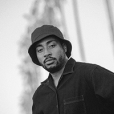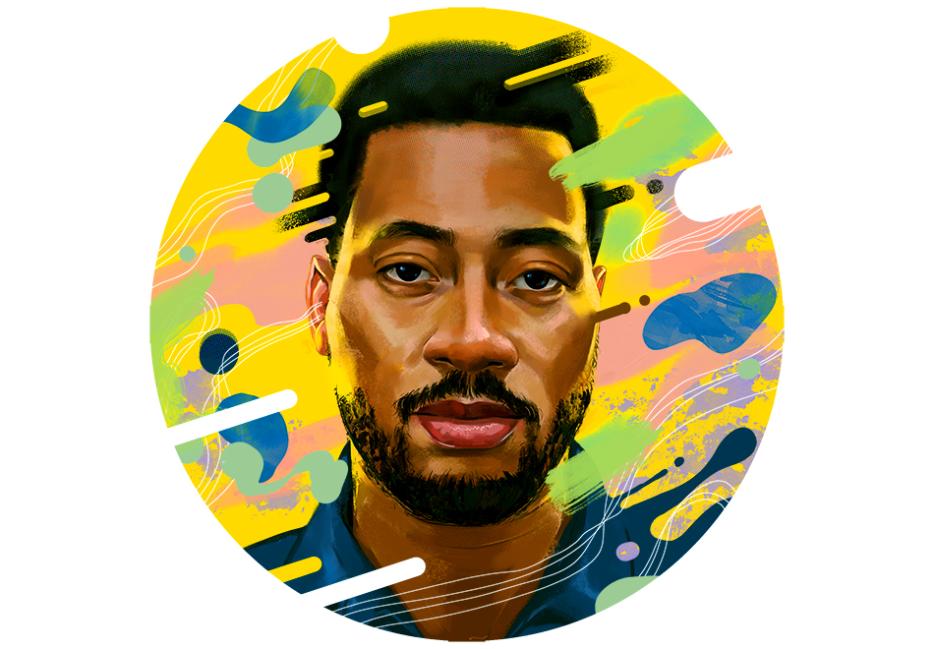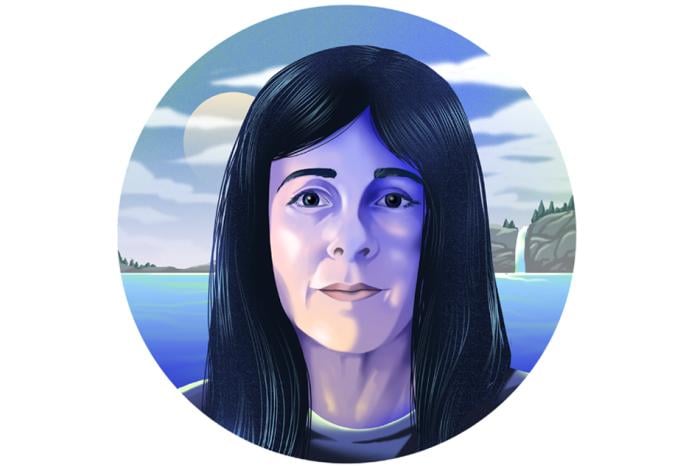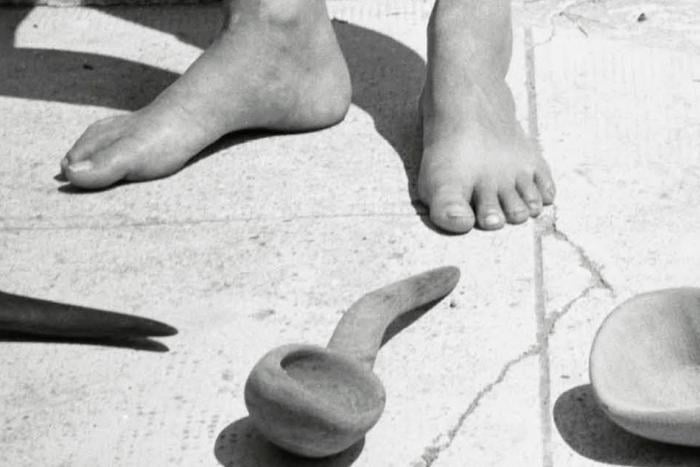Welcome to Mind in Bloom, a column deconstructing current events, music and art.
A couple weekends ago, on a layover after playing a show in Hamburg, I found myself with some friends at a rock bar on a typically soggy night in East London. Having recently gotten the Sunfly mascot tattooed onto my forearm, I was pleasantly surprised to learn that it was karaoke night. I had landed on the side of London where the entire crowd heartily sang along to “Don’t Look Back in Anger” by Oasis and mostly stared into their beers during Blur’s “Parklife.”
As a gag, I like to perform hip-hop songs (usually among the most challenging and frequently fumbled of all options at karaoke) in an effort to shock an unsuspecting audience with my professional rapping skills. After a rousing take on Jay-Z and UGK’s “Big Pimpin’,” my friend Jan’s rowdy Irish roommate kept trolling me about how we should perform Eminem’s “Stan” with him singing the Dido parts. Somewhat uneasy about looking like a sociopathic American for choosing to perform a six-minute-and-forty-four-second-long Eminem track in a foreign country, I initially demurred before eventually relenting by the end of the night.
As the words tumbled down the screen, I realized that I hadn’t heard this song even once since I was a teenager. Untangling the verses line by line in real time, I was impressed at how the lyrics somehow hadn’t lost any of their power. Like cracking open an old gothic horror novel, I found skillful technique had kept the writing from softening with age. Written in the now-anachronistic form of handwritten letters, “Stan” is a mournful, horrific song detailing a parasocial relationship between a fan and an artist that has never felt more prescient than it does today.
The titular character becomes angrier and more unhinged with each seemingly ignored message until it drives him to inflict violence on himself and others. “Stan” is where the oft-used term for an obsessive fan originates from, a portmanteau of “stalker” and “fan.” The obsessive admirer in modern memory could similarly be traced back to 1996’s The Fan, in which Robert De Niro plays a baseball nut who stalks the San Francisco Giants’ star player played by Wesley Snipes. What was once an extreme, unlikely scenario has become increasingly realistic since the advent of social media. Those ignored letters are now unread DMs.
Today’s biggest artists are watched and scrutinized by fans for their every post, like, and follow, each reply and comment dripping with a previously unseen level of entitlement. This pattern should sound familiar to anyone who has followed various pop stars’ rocky roads to the top in recent years, none more intense than the journey of nascent superstar and internet lightning rod Chappell Roan.
*
Stars can bend time and space. That’s what happened when I caught Chappell Roan’s set at Osheaga this past August. A curious by-product of sudden success is that you still have to play the old time slot that made sense a year ago, even after you’ve become the hottest act on the entire planet in the intervening months. Roan’s 3:30-p.m. performance drew an outsized audience for a festival set happening at that time of day. The air was crackling with anticipation.
You’d be forgiven for thinking that this was a Chappell Roan headline show, not a festival with dozens of other beloved performers. An undulating sea of pink cowboy hats dotted the crowd. Folks were crying and singing along to every word of her thirty-minute-long set, often drowning her out completely. I felt a sense that Roan was speaking to and for an audience that had been ignored by the music industry for far too long. Her mere existence felt like a victory that was being celebrated that very moment by a legion of queer kids and theatre nerds.
I arrived backstage midway through her world-beating “Good Luck, Babe!,” a non-album single that peaked at number 4 on the Billboard Hot 100 and has already made its way into the pantheon of Tears on the Dancefloor anthems. I recently played it back-to-back with “Dancing On My Own” at a birthday party I was DJing, and both songs elicited the same ecstatic, cathartic response. Like much of her work, “Good Luck, Babe!” is longing encapsulated, an electro-pop anthem that successfully harnesses the charged passion that lingers deep within us all.
Roan’s performance at Osheaga was one of the best I’ve ever seen. Serving glammed-up pink butterfly realness, she owned every inch of the stage and committed fully at every moment. It was dramatic, sensual, and fearsome, and I had the feeling that I would one day be breathlessly telling people about the time I got to see Chappell Roan years before she became the next Lady Gaga. You could already see her straining against the constraints of the now-too-small stage, ready to burst out of her cocoon into waiting superstardom.
The fervour for Roan is atypically passionate, a collective yearning that is impossible to artificially construct and often difficult to control. The merch tent was swarmed by fans before, during, and after her set, with not a single item left unsold. I can’t think of witnessing another artist’s popularity expanding so quickly in such a truncated period of time. According to Billboard, as of June, her streaming numbers had increased twentyfold since she opened for Olivia Rodrigo at the beginning of 2024.
The saying goes that it takes years to become an overnight success. This is true for Roan, who first signed to Atlantic back in 2015 and was in and out of the industry before blowing up. But you can’t help but shake your head at the sheer velocity of her ascent. It looks terrifying from the outside, watching an artist go from a niche concern to incandescently combustible in less than a year. With this level of success, backlash is inevitable.
*
A child prodigy from Missouri who, at the age of 16, showed up to summer music camp with “Lennon-McCartney-level songwriting skills,” Roan’s songs burrow into your head on first contact like the facehugger from Alien. Her lyrics tap into a fascinating specificity that feels raw, true, and singular to both her sexual identity and hard-earned life experience, which in turn resonates with the messy, circuitous lives of thousands of other young—and not-so-young (hello, superfan Elton John!)—people around the world.
Becoming the voice of a generation comes with certain potential pitfalls. Roan has taken to social media to establish personal boundaries in the relationship she has with her growing fanbase, such as saying no when asked for photos in public. Opinion on this has been divided. Music blogs like Pop Base and Pop Crave on X cover her missives, seemingly revelling in the opportunity to stoke outrage among their notoriously obsessive readership in the hope that they’ll profit from the rage farming.
This has resulted in the perception that all Roan does is complain, when in reality, her concerns are often related to safety. She’s asked fans not to call her by her real name, Kayleigh, when they see her in public. She had to hire security because of a stalker from back home. Fans started following her family around. Her trepidation seems more than reasonable, especially in light of incidents like Mexican-American pop star Selena’s death in 1995 at the hands of her fan club president.
Roan has laid bare the bizarre double standard that artists must always do whatever a fan asks of them when you would never place similar expectations on any regular person, regardless of their occupation. But her honesty has received pushback from a contemporary fandom that carries an increased sense of entitlement surrounding the artists that they listen to.
A similarly possessive situation is happening around the political statements that Roan made about whom she intends to vote for in the upcoming American general election. Her claim that she will vote for Kamala Harris despite not agreeing with all of her policies has been criticized as misguided by the increasingly fervent Vote Blue No Matter Who contingent. What the fury around her political opinions tells me is that toxic political discourse closely resembles toxic stan culture, both of which are spiritually indebted to toxic sports fandom, the original irredeemable online subculture.
Stans back their favourite pop stars in a similar manner to the armchair quarterbacks who will rip your head off for deigning to support a different team than they do. Choosing not to blindly endorse the Democratic candidate makes you a target for ire in the same way that calling Jordan the G.O.A.T. over LeBron will get you mercilessly attacked by a certain corner of the web. Chappell Roan represents a brave new generation of artists who aren’t as pliable or agreeable as their pop forebears—less willing to cozy up to political power and a little more aware, independent, and in control of their influence.






